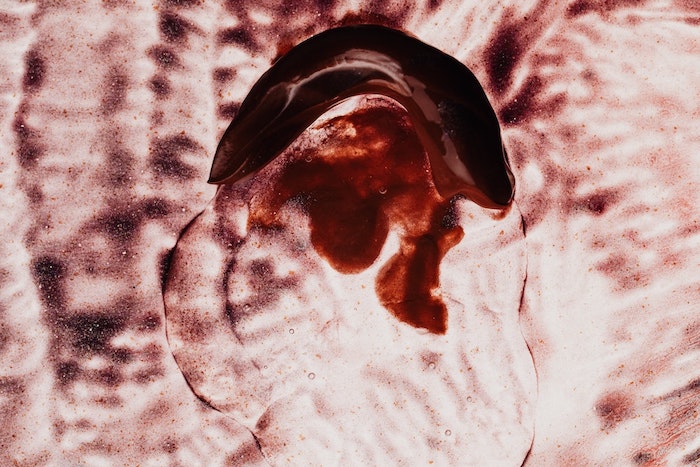Gang, even though the world generally has no idea, women also produce Testosterone. No, we do. It’s in smaller quantities than our male counterparts, but it’s there and working hard for you behind the scenes. But what happens when you have too much? Here’s our guide to foods that reduce Testosterone levels. You are, as always, most welcome.
What is Testosterone?
You’d be right in thinking that Testosterone is the primary male sex hormone. It’s largely produced in the testicles and plays a role in men’s libido, bone density, mood regulation, muscle mass, and sperm production, just to name a few.
But you might not know that your ovaries, adrenal glands, and fat and skin cells all produce Testosterone, though in much smaller quantities. In fact, Testosterone levels in women are about 5-10% of the total found in men.
Testosterone and your body
While Testosterone is the main sex hormone in men, the counterpart in women is the trusty Estrogen. As you know, Estrogen plays a big role in your reproductive system and a whole host of other bodily functions.
But here’s something mindblowing: Did you know that your body actually converts Testosterone into Estrogen? No, we didn’t either. We told you it was mindblowing.
It does that to help your sex hormones on their mission to maintain your reproductive system, bone health, and cardiovascular system, as well as regulate the menstrual cycle and all-important sex drive.
Now, our bodies are wired to expect a surge in the production of sex hormones, including Testosterone, in early adulthood. It’s a little something we like to call puberty. In boys, this increase in Testosterone helps them to develop certain characteristics. These include an increase in muscle mass, growth of facial and body hair, deepened voice, and sperm production.
Women’s bodies, however, are pretty good at converting Testosterone into Estrogen. And that encourages the development of secondary sex characteristics, including breasts, body hair, and fat and muscle development, as well as the regulation of the menstrual cycle and growth of the lining of your uterus.
What does high Testosterone in women look like?
Sometimes, though, your body might not be able to keep up with converting Testosterone into Estrogen. When this happens it can cause an excess. In this case, you may experience a variety of symptoms:
- Increased facial and body hair growth
- Fertility issues
- Acne
- Deepened voice
- Changes in blood sugar levels
- Irregular Menstrual cycle patterns
- Obesity
- Reduced breast size
- Polycystic Ovary Syndrome (PCOS)
- Enlarged clitoris
In more severe cases, high levels are linked to fertility issues, obesity, type 2 diabetes, and heart issues.
Diagnosing high Testosterone
If you’re experiencing any of those symptoms, please talk to a healthcare type. It’s likely that they’ll ask you a few questions about any mood swings, Menstrual cycle irregularities, and sex drive dips that you’ve been experiencing. They’ll also conduct a physical examination of the symptoms that you’re presenting.
Based on their findings, they may recommend a blood test to measure your Testosterone levels more accurately. It’s best to have your blood taken in the morning as that’s when your levels are naturally at their highest.
If you’re still experiencing periods, it’s recommended that you take the test 8-20 days after your first day of bleeding. Yes, it’s a very big window. Also, you may need to pause any medication you’re taking to get the most accurate results, but your doctor will give you plenty of warning if that’s the case.
What causes high Testosterone in women?
There are several underlying health conditions that can cause high Testosterone levels. Though research is ongoing, it’s widely thought that these conditions are largely down to… Genetics. So, that’s fun.
Hirsutism
Hirsutism causes excessive and often unwanted hair growth, usually on the face, back, and chest. In the most severe cases, that can be accompanied by balding, a deeper voice, acne, and an increase in muscle mass. One of the most common causes of Hirsutism is PCOS.
PCOS
Suspected to affect 8-20% of all women, PCOS is one you’ve probably heard us talking about before. It’s generally diagnosed in your late 20s and 30s, but symptoms can start as early as puberty. Those symptoms include ovaries that grow follicles and can’t produce eggs on a regular basis, excess body hair, and irregular menstrual cycles. PCOS can also lead to depression, infertility, increased chance of miscarriage, type 2 diabetes, and heart disease.
Congenital Adrenal Hyperplasia (CAH)
This one affects your adrenal glands. They produce Cortisol and Testosterone, both of which are responsible for your metabolism and blood pressure. However, those with CAH are missing an enzyme needed to monitor the production of those hormones. As a result, you end up with too much Testosterone. That can lead to the overproduction of other male sex hormones and has been linked to excessive hair growth, fertility issues, and severe acne.
Foods that reduce Testosterone
Unfortunately, there are currently no known cures for those conditions. However, there are medical treatments available that can ease the symptoms you may be experiencing. As always, gang, this is where it’s essential you talk to a healthcare type to discuss your therapy choices.
Medical options aside, monitoring your diet can be a great way to take back control of your Testosterone levels. Remember, you’re looking for that all-important balance. So foods that reduce your Testosterone levels naturally may also help to relieve your symptoms and improve your general wellbeing.
Flaxseed
Flaxseed is a fave of ours. Not only is it loaded with fiber and healthy fats, but it’s also a food that lowers your Testosterone. This is thanks to the presence of plant compounds called lignans. Lignans attach themselves to Testosterone molecules and expel them from your body. Make sure you grind your flaxseed down, though, as it can pass through the digestive tract whole, meaning you may miss out on its Testosterone-banishing goodness.
Licorice root
We get it, this is love or hate. But listen up, because studies conducted in Integrative Medicine Research have shown that licorice root can reduce Testosterone levels during the Menstrual cycle. As if that wasn’t enough, it can also soothe the symptoms of PCOS and Hirsutism. If you can stomach it, it’s best to reap the benefits from a cup of licorice root tea and take full foods-that-reduce-Testosterone advantage.
Mint Tea
There are some awesome active ingredients in spearmint tea that help reduce Testosterone. It basically stops the hormone breaking down into another, less-friendly form of Testosterone. Known as Dihydrotestosterone, or DHT, it’s so powerful that your body can’t convert it into Estrogen. High levels of DHT can make your symptoms worse.
Nuts
Any and all nuts are a great option here. But if you’re on the hunt for the most efficient nut-based food that lowers Testosterone, walnuts and almonds are your go-to guys. Why? Eating both regularly increases levels of globulin in women by up to 16%. Here’s why that’s important: It binds to Testosterone, helping to expel excesses of it and hopefully soothe your symptoms in the process.
Reishi
Red Reishi is a Japanese mushroom that offers a wealth of health benefits. Much like with mint tea, adding them to your diet means your body will find it harder to convert Testosterone to that pesky DHT.
Soy
Soy is wonderful stuff. And that’s because it’s high in phytoestrogens. These imitate the effects of Estrogen, adding to your own levels and potentially reducing Testosterone levels. We love this option because it’s really accessible. Think tofu, edamame, miso, and soy nuts.
Vegetable Oil
Chock-full of polyunsaturated fatty acids, vegetable oil is without doubt one of the foods that reduce Testosterone. This is because, as polyunsaturated fats break down, they can decrease your body’s ability to produce Testosterone. Sadly, men are the focus of much of this current research, but swapping out your regular oil to reap the potential benefits would hurt, right?
Foods that reduce Testosterone: The bottom line
Though your diet is a great place to start when addressing Testosterone levels, it’s also worth noting that there are a variety of factors that influence them. You’ll naturally experience a dip in Testosterone as you approach Menopause, but your sleep-wake cycle and your level of activity can also have an impact.
Most importantly, gang, remember that there is no shame in experiencing high Testosterone and its side effects. Chances are, we all will at some point, because, hormones. As always, though, if you’re concerned about anything you’ve read here, please reach out to a healthcare type.





